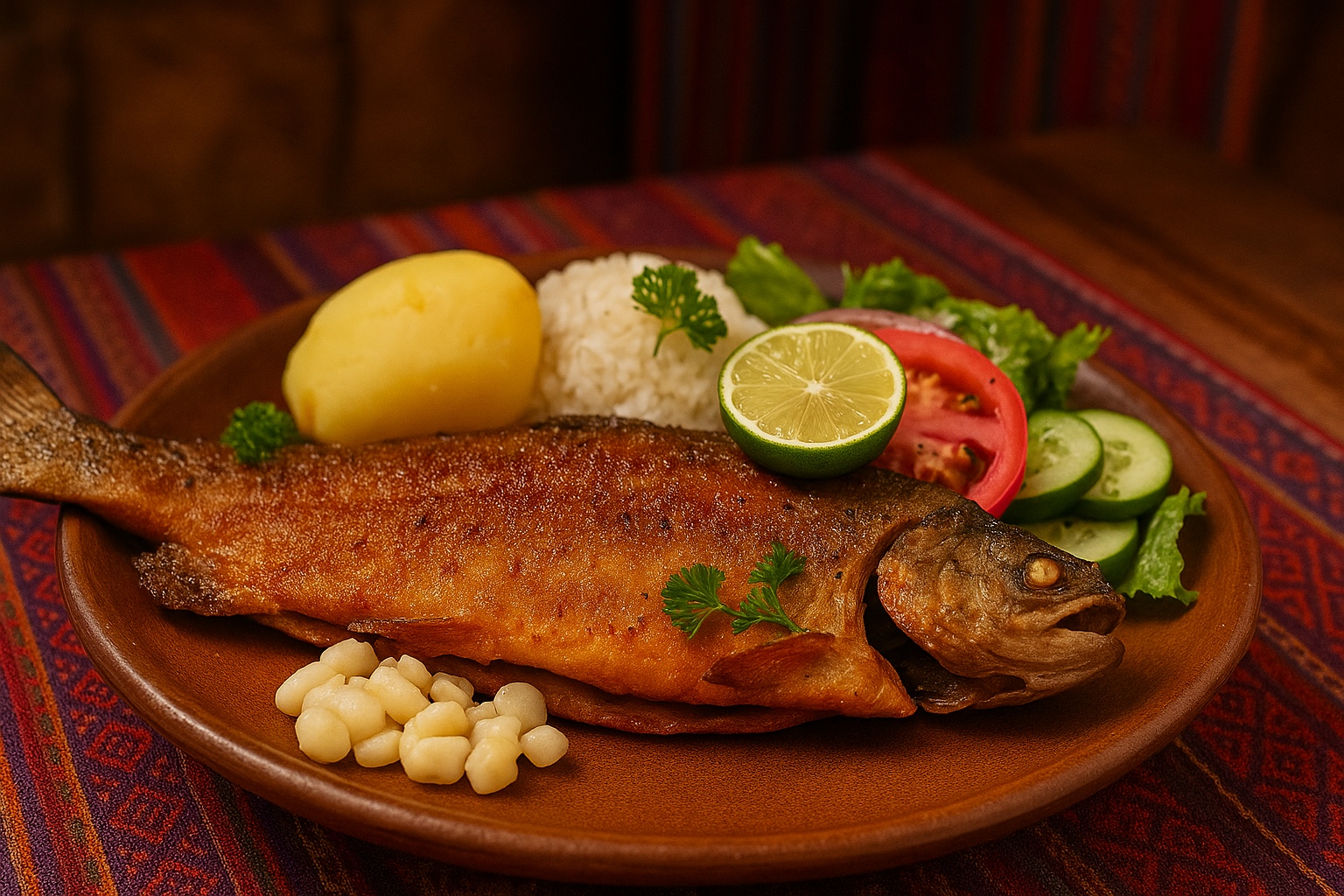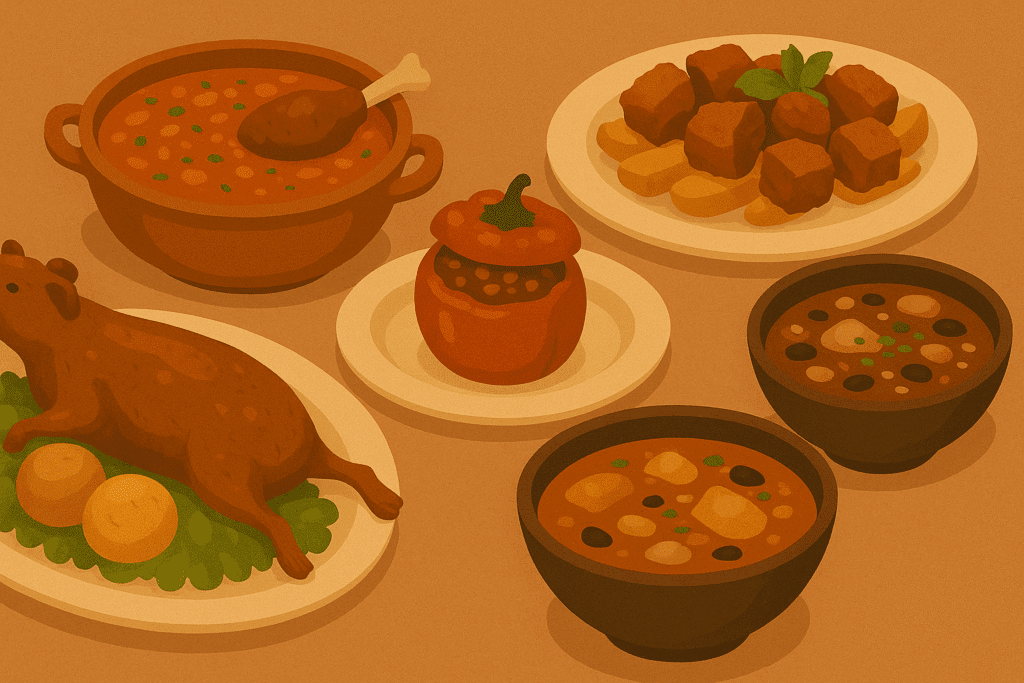With a crispy exterior and a soft, juicy interior, Andean fried trout is much more than a typical dish. It is an experience that connects you with rural life at high altitudes, the flavors of the land, and the traditions of communities such as Puno, Cusco, Arequipa, and Huancavelica. Although the trout was introduced only in the 20th century, it has found a new home in the high Andean lagoons and rural kitchens, becoming part of a new cultural identity.

📜History
The rainbow trout (Oncorhynchus mykiss) was introduced to Peru in 1928, as part of a plan to promote fishing in high Andean lakes. Originally from North America, it adapted perfectly to the cold waters of Lake Titicaca and other high altitude lakes.
In a few years, it became a key source of protein for rural communities, displacing even native species such as silversides and ispi. Thus was born the fried trout, a simple recipe, with local ingredients, which soon became part of the daily and festive menu in the southern Andes.
🤔 Curiosities of the Fried Trout
- The taste of trout varies depending on their habitat. Those raised in natural lakes have a stronger flavor. Lake and river trout have an intense flavor and firm texture. Farmed trout have a smoother, more uniform texture.
- Trout is a carnivorous species, so in the Andes they do not mix its breeding with other fish such as silversides.
- In some areas, it is served with quinua soup or crema de chuño as part of a traditional menu.
- Trout has been key to community aquaculture projects, boosting the rural economy.
- In festivals such as the Trout Festival in Moho (Puno), it is the main protagonist.
- The crispy skin of the trout is considered by many to be the best part of the dish.
🔬 Nutritional Value of Trout
- High biological value proteins
- Omega-3: good fats for the heart
- Vitamins: B12, B6, D y niacin
- Minerals: potassium, phosphorus and selenium
- Low in saturated fat if prepared in moderation
Combined with boiled potatoes, mote and salad, it becomes a perfect energy meal for the Andean climate.
📍 Culture and Symbolic Importance
Although it is an “imported” fish, fried trout has been fully adopted by traditional Andean cuisine. It is found in:
- Regional gastronomic fairs
- Family and tourist restaurants
- Rural dining and festivals
- Special events such as family Sundays, patron saint festivals or Sunday fairs
📌 Ingredients
This dish needs time, patience and love, like any good tradition.
| 🛒 Ingredients | 📌 Quantity for 4 diners. |
|---|---|
| Whole trout | 4 |
| Unprepared flour or Bread crumbs | 1/2 cup |
| Lemon | 2 |
| Oil | 1/2 lt approx. |
| Salt | to taste |
| Pepper and other seasonings | (optional) |
🍲 Preparation
- Clean the trout: Remove guts, scales and blood. Wash with cold water until completely clean.
- Season with salt, pepper (optional) and lemon: Rub on both sides and inside the cavity. Let them rest for 10 minutes for the flavors to permeate.
- Lightly flour: Use plain flour or bread crumbs. Coat the surface well, shaking off the excess.
- Fry in hot oil: In a wide frying pan with a good bottom, carefully place the trout. Fry 4-6 minutes per side, until golden brown.
- Drain and serve: Use absorbent paper or a rack. Serve with boiled potatoes, mote, fresh salad and uchucuta andina.
Serve hot with Andean potatoes (boiled or fried), cooked corn, a fresh salad, and a generous helping of homemade uchucuta or ground chili.
👨🍳👩🍳Variantes Trout Preparation
- Grilled: Lighter option, ideal for tourists or people on a low-fat diet.
- Ceviche or escabeche de trucha: Innovative and gourmet versions in urban areas
✨ Conclusion
Fried trout is a clear example of how an outside ingredient can harmoniously blend into an ancient culture to create a new culinary symbol. This dish represents crossbreeding, sustainability, and regional identity in every rural festival, at every family table, and in every picantería in the altiplano.
🌄 Si visitas el sur del Perú, especialmente cerca del lago Titicaca, no puedes dejar de probarla. Crujiente, sabrosa y profundamente andina, la trucha frita es sabor, historia y tradición en un solo plato.





